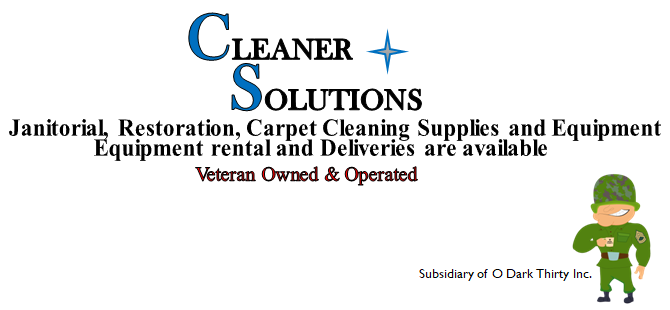- RENTAL EQUIPMENT
- RESTORATION
-
Carpet Cleaning
- EQUIPMENT
- Boosters/Additives
- Bonnet & Encapsulation
- Carpet Deodorizer
- Degreasers & Cleaners
- Carpet Presprays
- Extraction & Rinses
- Protectors
- Spotters
- Adhesive Removers
- Pet Urine Stain Removers
- Pet Odor & Stain Removers
- Upholstery
- Fire & Smoke Odor
- Tile & Grout, Stone, & Concrete
- Speciality Products
- Newline Chemicals
-
Janitorial Supplies
- Window Cleaning
- CAN LINERS
- PAPER PRODUCTS
- Brooms & Dustpans
- Brushes
- Buckets
- CORONAVIRUS SAFETY SUPPLIES
- Disinfectants / Sanitizers
- Carpet Bonnet's
- Dusting & Accessories
- FILTERS
- Floor Wax & Strippers
- WOOD FLOOR CARE
- Floor Protection
- Burnishers
- Floor Machines
- Floor Pads/Bonnets
- Floor Squeegee
- Foam Blocks & Tabs
- Hand Soap
- Restroom Odor
- Oxygen-Pro
- Wood Cleaning
- Odor
- Toilet Bowl Cleaners
- Multi-Purpose Cleaners
- Micro Fiber, Cloths, & Sponges
- Mops & Accessories
-
ACCESSORIES
- Brushes & Rakes
- Containers/Measuring
- Dispensers
- Extention Cords
- Floor Rotary Brushes
- Foggers
- Furniture Moving
- Janitor Carts
- Hose Cuffs
- Hoses
- In-Line Filters
- Odor Tools
- Miscellaneous Accessories
- PRESSURE WASHING
- Quick Connectors
- Restroom
- Sprayers
- Spotting
- Storage & Organization
- Straps & Hangers
- Stone Polishing System
- Tile & Grout Tools
- Urine Detection
- Window & Glass Cleaning
- PPE & SAFETY SUPPLIES
- PARTS
- CHEMICALS
- DEALS
Upholstery Cleaning
Upholstery Cleaning
Upholstery cleaning is, often, the 1st “add-on” opportunity in a home.
Many carpet cleaners who have had a few bad experiences won’t do upholstery cleaning, anymore. The obvious problem is, losing customers to someone who cleans both.
Many carpet cleaners feel trapped. They’d rather not do upholstery cleaning, but feel they have to. They clean easier, less demanding fabrics, like polypropylene. These, unfortunately, are not the money makers.
I had 20 upholstery cleaning technicians who were all good at it.
They followed simple guidelines that took away the “fear of cleaning upholstery.”
Learn to Identify Fiber When a fiber is burned, a soft, crumbly ash; is natural. A hard ball; is synthetic. Natural fiber can cause more problems than synthetic…..if you let it. You want to progress to knowing how to identify many fabrics and learn the pros and cons of each, but knowing if it’s natural or synthetic, is a great start.
Natural Fiber Natural fiber (fiber is the thread, fabric is what the thread becomes, after weaving) usually costs more than synthetic. When a cleaner mentions potential problems they’ll often hear, “The money I paid for this couch, it better not bleed!” The more expensive, the more likely it’s a natural fiber, with potential problems.
- Natural fiber is absorbent and can take a long time to dry. The longer the drying time, the more chance for bleeding, yellowing, browning or shrinking.
- Use as little moisture as possible. A good upholstery tool wets the fabric, not the cushion or material underneath.
- Dry it, fast. Air movers. Don’t allow the problems to happen. Bleeding, often, happens just before the fabric is totally dry. Dry “past” the problem.
- Our general rule of thumb (nothing scientific) was a fan for each piece cleaned, another, to dry cushions.
- Test for dye bleeding. Hold a white towel, with the cleaning solution, on the fabric, for a minute, or so, and see if color is on the towel. Test by the zipper or skirt, where it won’t show.
- NOTE: The older the fabric, the greater chance it will bleed. Previous cleaning could affect the dye.
ALSO, wear can cause fiber to weaken and dye to be unstable. You may want to test with Q-Tips on the center of a cushion, being careful to keep the moisture within the area of that color.
In 28 years, cleaning thousands of couches, I found two that bled. The odds are, your couch is not going to bleed, but a $6,000 love seat….you going to risk it? That’s your decision.
General Rule of Thumb Alkaline tends to loosen dye, acids tend to help stabilize it………..maybe.
Now, we have the advantage of dye stabilizers, such as, Bridgepoint Dye Lock or Fabric Protectors that have Dye Lock as an ingredient.
Great idea!
If you are unsure, attend an IICRC approved upholstery cleaning class. There can be real money in cleaning the upholstery others won’t clean and…you don’t have to be afraid, once you set up some guidelines and procedures.
MAKE MONEY!
Dennis Klager
IICRC Instructor
